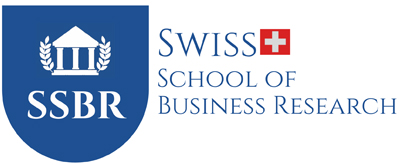On Tuesday 4th May 2021, Swiss School of Business Research is delighted to host the first in a series of online sessions. The topic of the discussion will be:
Innovation is not just about tech: it’s an adaptable mindset that makes you innovate successfully
Participating in the event are two incredible business minds; Business expert and teacher Victoria Masters and innovation catalyst Simone van Neerven.
Victoria will lead the session inviting Simone to discuss the topic in question, referring to the findings in her latest article;
An Adaptable Mindset Is A Prerequisite For Innovation
“Innovation plays a fundamental role in helping organisations stay relevant, and it will continue to dominate the future of our economy. As the world is becoming more complex by the day, with an accelerating pace at which technologies develop, it is also more and more challenging to keep up and stay sane at the same time.
It is our belief that you have to continuously train your mindset to be more adaptable – and the research is on our side. Numerous studies about the future of work conclude that adaptability is one of the key skills we need to develop for the future.
People with an adaptable mindset are continuous learners and have proven to be more resilient, happier, more creative and more productive”.
An Adaptable Mindset Is A Prerequisite For Innovation by Simone van Neerven and Robert Overweg
This will be followed by a Q&A, giving event participants the opportunity to tap into the wealth of knowledge and experience gained by both business successors.
To get the most out of the session, we highly recommend reading Simone’s article beforehand and submitting any questions for either guest prior to the event. Questions can be directly related to the discussion topic or their individual professional journey.
Victoria Masters
“After ten years´ commercial experience managing the accounts of some of the U.K.’s best-loved brands, most notably innocent drinks, Victoria took a career break to see the world.
Whilst exploring other cultures, she discovered a passion for working with diverse teams. Victoria now teaches and mentors in the international higher education and business sectors, specialising in areas such as diversity and inclusion.
Her purpose is to make businesses more inclusive and to inspire organisations and individuals to innovate by putting people and the planet before profit”.
Simone van Neerven
“After a long corporate career, Simone founded her company reBella in early 2018. She is a catalyst for innovation. Simone defines innovation as having your head in the clouds and keeping your feet on the ground at the same time. She has found practical ways to do this, and along the way learned that the most crucial key to success is the team.
How does she supercharge teams?
By bringing together the right mix of techies, service designers, and business experience. By letting go to unlock the hidden talent. By not tolerating an ‘I win, you lose’ attitude. By falling in love with problems. By helping each team member to create an adaptable mindset. And so much more”!
The event will take place via Zoom on Tuesday 4th May at 6pm (GMT+2). Get in touch with one of our team to register your interest and receive the joining link.
Email: info@ssbr-edu.ch
Insta: @swissschoolofbusinessresearh
Facebook: @swissschoolofbusinessresearh
We look forward to seeing you there!

